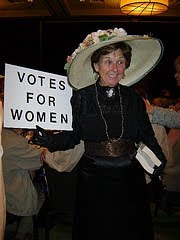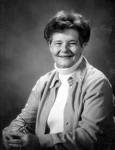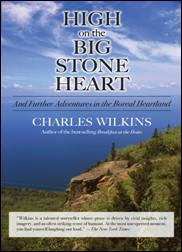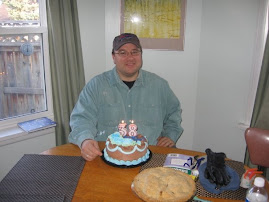Showing posts with label Stenson Fred. Show all posts
Showing posts with label Stenson Fred. Show all posts
Monday, August 31, 2009
Fred's Historical Tips
Fred Stenson’s recent novel, The Great Karoo, deals with Canadian involvement in the Boer War. This is his fourteenth book. Fred’s easy going approach brought forth some lively discussion and questions on historical writing in the workshop on Saturday afternoon.
Like many historical writers, Fred Stenson is a stickler for the historical record. He sees history as a sort of Rubic’s Cube, a cluster of interlocking facts. If you change one historical fact, you change the configuration and you might have to fudge the more.
The reader will not engage with patois, heavy accents, ancient speaking styles or Victorian style. The historical novelist must strive for a voice that is authentic to the times but is believable. Fred says he writes in neutral English and strives for an informal tone.
He looks for minor characters, real people if possible, who are close to the historical events.
You can’t research a fictional person. You research real people and fictionalize them.
The humour of the past can often jar today. He says you can always make fun of the oppressor but never the oppressed. Some words commonly used in the past are considered racist today and must be handled with care.
Research.
a) first read the big overview book, the tome.
b). as soon as you have a handle on the historical events you want to include, look for the original sources: the letters, diaries, journals etc. He had the amazing luck to find a set of letters from a soldier in the Boer War.
c) Look at photos, drawings and paintings of the period. However, he cautions to be wary of paintings. He learned this hard truth when he visited a battle site in South Africa and realized the painter had skewed the landscape completely.
d) Travel. Nothing is better than to visit the places in the book.
c) Read the old newspaper accounts but realize 19th century newspapers were often politically biased.
Like many historical writers, Fred Stenson is a stickler for the historical record. He sees history as a sort of Rubic’s Cube, a cluster of interlocking facts. If you change one historical fact, you change the configuration and you might have to fudge the more.
The reader will not engage with patois, heavy accents, ancient speaking styles or Victorian style. The historical novelist must strive for a voice that is authentic to the times but is believable. Fred says he writes in neutral English and strives for an informal tone.
He looks for minor characters, real people if possible, who are close to the historical events.
You can’t research a fictional person. You research real people and fictionalize them.
The humour of the past can often jar today. He says you can always make fun of the oppressor but never the oppressed. Some words commonly used in the past are considered racist today and must be handled with care.
Research.
a) first read the big overview book, the tome.
b). as soon as you have a handle on the historical events you want to include, look for the original sources: the letters, diaries, journals etc. He had the amazing luck to find a set of letters from a soldier in the Boer War.
c) Look at photos, drawings and paintings of the period. However, he cautions to be wary of paintings. He learned this hard truth when he visited a battle site in South Africa and realized the painter had skewed the landscape completely.
d) Travel. Nothing is better than to visit the places in the book.
c) Read the old newspaper accounts but realize 19th century newspapers were often politically biased.
Sunday, August 30, 2009
The Narrative Spell at the Sleeping Giant Writers Festival
When I made my workshop picks a month ago, I agonized. What about “Writing the Past,” a memoir workshop with Leilah Nadir? At the festival many people spoke highly of that workshop.
However, I chose Fred Stenson’s presentations on ‘Advanced Fiction," a good choice for me. Fred turned out to be a genial person, friendly and knowledgeable. He focused on the narrative spell, the spell woven by the writer to engage the reader. This is what makes fiction work.
Fred spent some time discussing Point of View (POV). He said he himself had trouble working in third person POV and was much happier in first person until Carol Sheilds told him, “change all your I’s to he’s.” Very often an omniscient POV is brought in to at the beginning of a scene to describe the setting. Sometime the end of a story moves out of the mind of a character into a more universal or omniscient overview as it does at the end of the Joyce story, “The Dead.” Switching POV or using multiple POVs can be done with care, good signalling and a coherent motive. But it's not easy and often publishers are wary of multiple POV’s novels.
Here are a few Stenson pointers.
1. The more the novel mimics our own experience, the more we are engaged.
2. Plots are character driven. The characters move through decision points. If you have writers’ block, you may not know your character well enough. Go back and write a monologue for your character.
3. Plot outlines do not work. Stenson never relies on them. Your character will take on its own life and move away from the outline. You have to let your character go.
4. Readers often cannot say why a book leaves them cold. But one reason is the artificial feeling when the characters are forced to conform to the plot rather than visa versa.
Breaking the Spell. Every time you break the narrative spell, the reader surfaces. She may surface long enough to toss the book across the room. Here are some ways a writer can break the narrative spell.
a. A writer may switch POV without reason or warning. Disconcerting to the reader.
b. We try to write in scenes. But how can you check to make sure you are doing scenes? Check the dialogue. If there is no dialogue, you are not in a scene.
c. Transitions always break the spell but you have to have them to move to the next scene. Keep them short, preferably a word or a phrase.
d. Introspection and long thinks by the characters can be flat spots that cause the reader to disengage. Wordy musings are often unnecessary, especially in the midst of the action. Some writers do not let their characters think at all - Cormac McCarthy for one.
e. Exposition. You need it to get certain facts across to the reader but keep it brief or disguise the info or stagger it in. Dribble in the info. Front loading your story with info is boring.
f. Confusion in the plot. The reader has a right to know where and when the action is taking place, what is going on and who is speaking.
However, I chose Fred Stenson’s presentations on ‘Advanced Fiction," a good choice for me. Fred turned out to be a genial person, friendly and knowledgeable. He focused on the narrative spell, the spell woven by the writer to engage the reader. This is what makes fiction work.
Fred spent some time discussing Point of View (POV). He said he himself had trouble working in third person POV and was much happier in first person until Carol Sheilds told him, “change all your I’s to he’s.” Very often an omniscient POV is brought in to at the beginning of a scene to describe the setting. Sometime the end of a story moves out of the mind of a character into a more universal or omniscient overview as it does at the end of the Joyce story, “The Dead.” Switching POV or using multiple POVs can be done with care, good signalling and a coherent motive. But it's not easy and often publishers are wary of multiple POV’s novels.
Here are a few Stenson pointers.
1. The more the novel mimics our own experience, the more we are engaged.
2. Plots are character driven. The characters move through decision points. If you have writers’ block, you may not know your character well enough. Go back and write a monologue for your character.
3. Plot outlines do not work. Stenson never relies on them. Your character will take on its own life and move away from the outline. You have to let your character go.
4. Readers often cannot say why a book leaves them cold. But one reason is the artificial feeling when the characters are forced to conform to the plot rather than visa versa.
Breaking the Spell. Every time you break the narrative spell, the reader surfaces. She may surface long enough to toss the book across the room. Here are some ways a writer can break the narrative spell.
a. A writer may switch POV without reason or warning. Disconcerting to the reader.
b. We try to write in scenes. But how can you check to make sure you are doing scenes? Check the dialogue. If there is no dialogue, you are not in a scene.
c. Transitions always break the spell but you have to have them to move to the next scene. Keep them short, preferably a word or a phrase.
d. Introspection and long thinks by the characters can be flat spots that cause the reader to disengage. Wordy musings are often unnecessary, especially in the midst of the action. Some writers do not let their characters think at all - Cormac McCarthy for one.
e. Exposition. You need it to get certain facts across to the reader but keep it brief or disguise the info or stagger it in. Dribble in the info. Front loading your story with info is boring.
f. Confusion in the plot. The reader has a right to know where and when the action is taking place, what is going on and who is speaking.
Subscribe to:
Posts (Atom)








































































































































































































































































